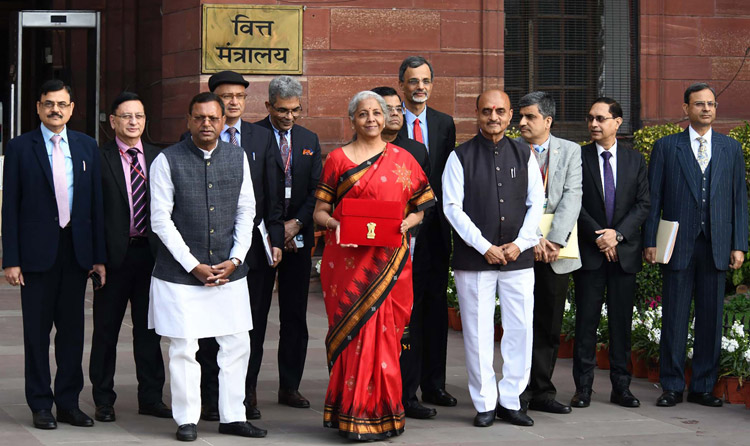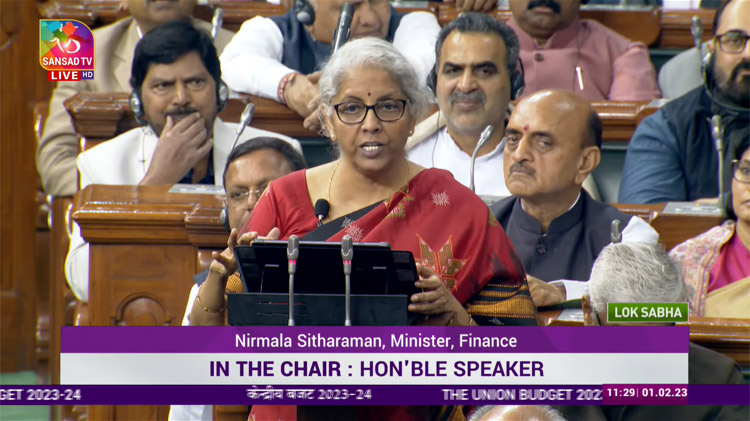INDIAN ARMED FORCES CHIEFS ON OUR RELENTLESS AND FOCUSED PUBLISHING EFFORTS

The insightful articles, inspiring narrations and analytical perspectives presented by the Editorial Team, establish an alluring connect with the reader. My compliments and best wishes to SP Guide Publications.

"Over the past 60 years, the growth of SP Guide Publications has mirrored the rising stature of Indian Navy. Its well-researched and informative magazines on Defence and Aerospace sector have served to shape an educated opinion of our military personnel, policy makers and the public alike. I wish SP's Publication team continued success, fair winds and following seas in all future endeavour!"

Since, its inception in 1964, SP Guide Publications has consistently demonstrated commitment to high-quality journalism in the aerospace and defence sectors, earning a well-deserved reputation as Asia's largest media house in this domain. I wish SP Guide Publications continued success in its pursuit of excellence.
Defence Budget 2023-2024
The Defence Budget 2023-2024 is 5.94 lakh crore, an increase of about 12.5 per cent over last year
 |
The Author is Former Director General of Information Systems and A Special Forces Veteran, Indian Army |

According to the Budget papers for 2023-2024, the total size of the Defence Budget 2023-2024 is 5,93,537.64 crore – or 5.94 lakh crores for ease of reference. In 2022-2023, the defence budget allocation was 5.25 lakh crore which figuratively speaking implies an increase of about 12.5 per cent over last year.
A total of 1.62 lakh crore has been set aside for Capital outlay that includes purchasing new military equipment like fighter jets, submarines, warships, missiles and other military hardware. In 2022-23, the budgetary allocation for Capital outlay was 1.52 lakh crore although the revised estimates for 2022-2023 show the actual expenditure as 1.50 lakh crores. The Capital outlay of 1.62 lakh crore this year indicates an increase of 10,000 crores or 6.7 per cent over last year. However, how much of this would get absorbed by inflation, rising procurement costs vis-à-vis the numbers required and in paying installments of previous deals, only time would tell.
A total of 1.62 lakh crore has been set aside for Capital outlay that includes purchasing new military equipment like fighter jets, submarines, warships, missiles and other military hardware
According to 2023-24 Budget documents, an allocation of 2,70,120 crore has been made for Revenue Expenditure that includes expenses on payment of salaries and maintenance of establishments. The budgetary allocation of Revenue Expenditure in 2022-23 was 2,39,000 crore, which indicates an increase of 31,129 crore in this year's budget.
A separate amount of 1,38,205 crore has been allocated for defence pensions, which compared to last year's allocation of 1.19 lakh crores indicates an increase of 15 per cent. This could be because of payment of one rank, one pension (OROP) which the Supreme Court has directed the government to pay since 2019. Moreover, defence pensions also include pension of civilian-defence employees of the Ministry of Defence (MoD) allocation for which an amount of 22,812 crores is shown.

The outlay for the Ministry of Defence (Civil) has been pegged at Ra 8,774 crore while an amount of 13,837 crore has been set aside under capital outlay. The total Revenue Expenditure including the pension outlay has been estimated at 4,22,162 crore.
The Capital Budget for the Border Roads Organisation (BRO) has been pegged at 5,000 crores against 3,500 crores allotted in FY 2022-2023, which is good. However, this should be viewed in comparison to China's continued border infrastructure development which is far ahead of us. We must pay special attention to end connectivity of our border roads as well (https://www.spsmai.com/experts-speak/?id=1272&q=End-Connectivity-of-Border-Roads ). Moreover, the 14 strategic railways planned to connect our borders have yet to take off.
All three Services had made presentations to the MoD earlier and sought more funds. How closely these projections would have been examined despite the continuing India-China standoff remains questionable.
The Finance Minister announced 'Vibrant Villages' in her speech, which she had announced during her budget speech last year as well but did not cover any progress made over the past one year. These plans anyway are to upgrade existing villages, some of which are far behind the Line of Actual Control (LAC) and nowhere equivalent China's 'Border Villages' which augment the defence potential of the Peoples' Liberation Army (PLA).
As per the norm, all three Services had made presentations to the MoD earlier and sought more funds, which would have been sent to the Ministry of Finance (MoF). How closely these projections would have been examined despite the continuing India-China standoff remains questionable in absence of a National Security Strategy (NSS) and without a Comprehensive Defence Review. The general view anyway is that war is not an option for China (which should relate to all out war – not opening 2-3 fronts) and our policy of appeasement by not calling China the aggressor and giving more financial gains through bilateral trade (more than before 2020) is working well.
The Finance Minister naturally had to present a budget that would get the best political dividend to the government considering the General Elections in mid-2024, preceded by elections in 10 States this year including the Union Territory of J&K. But then, we are talking of a $5 trillion economy and a 7 per cent growth rate although the UN has downgraded our growth rate this year to 5.2 per cent and the IMF to 6.2 per cent.
We cannot match China's defence expenditure but have we found the right balance between national security, economy and development is the question?
We cannot match China's defence expenditure but have we found the right balance between national security, economy and development is the question? The Army is looking for more drones of all types, light tanks, more firepower and surveillance and monitoring systems. The Navy needs to get INS 'Vikrant' operational with its full air complement and more submarines, the P-75(I) included. The IAF needs to get the S-400 systems deployed and add more fighter jets to make up the depleting number of operational squadrons required. In addition, projects like the Tejas MK2 Multirole Fighter Aircraft (MRFA) and the Advanced Medium Combat Aircraft (AMCA) for fifth-generation fighter jets must keep progressing.
How much of the above in terms of numbers can be procured from the Capital outlay, in addition to meeting other operational requirements, would depend on share of the individual Service and the priority allotted for procurement. We are not a country like Japan that has hiked its defence budget by 26 per cent this year faced with the booming China threat despite having no land border with China. In comparison, we share a 3,488 km long border with China which is not demarcated and hostile neighbours like China, Pakistan and their anti-India nexus. The general belief that the LAC has stabilised may be wishful thinking.
Finally, the Armed Forces will have to make do with what is allotted – prioritise and keep hoping portion of what is allotted does not lapse. In between there would be periodic political statements that there would be no dearth of funds for defence.





